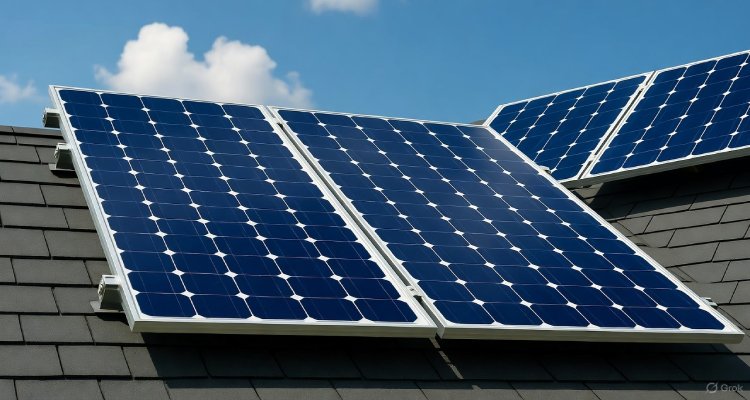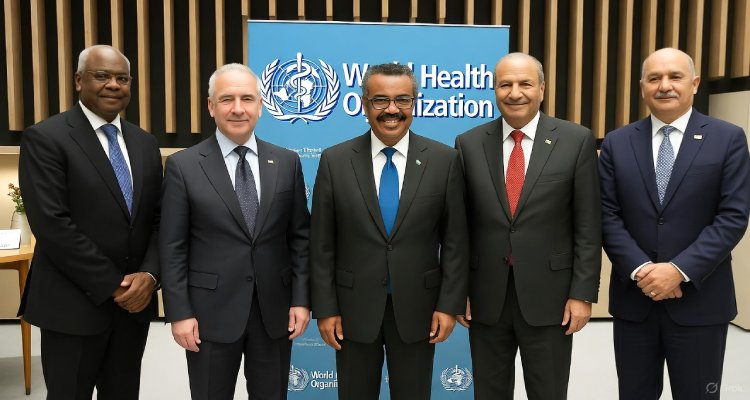India Now 3rd Largest Solar Energy Producer in the World, Says Government
India has become the world’s third-largest solar energy producer, reaching 125 GW in solar capacity. Here’s how the nation is shaping the future of clean energy through the International Solar Alliance (ISA).
A New Dawn for India’s Clean Energy Ambition
In a landmark announcement, India has officially become the third-largest solar energy producer in the world, marking a monumental step in its journey toward clean and sustainable power. Union Minister of New and Renewable Energy Pralhad Joshi revealed that the country’s solar generation capacity has now reached 125 gigawatts (GW) — trailing only behind China and the United States.
The declaration came during the curtain raiser event for the 8th Assembly of the International Solar Alliance (ISA), held in New Delhi on October 8. The event highlighted India’s growing global influence in the renewable energy sector and its commitment to achieving ambitious green energy targets.
From Paris to New Delhi: The Rise of the Solar Superpower
India’s meteoric rise in solar production is not a sudden feat but the result of a decade-long policy drive and international collaboration. The International Solar Alliance (ISA), co-founded by Prime Minister Narendra Modi and then French President François Hollande in 2015 during the COP21 Climate Summit in Paris, has been at the heart of this transformation.
ISA, headquartered in Gurugram, India, became the world’s first intergovernmental organization based in the country in 2017. Its mission: to foster cooperation among solar-resource-rich nations—those located between the Tropic of Cancer and Tropic of Capricorn—to promote affordable, accessible, and sustainable solar energy solutions.
Today, 124 countries have signed the ISA Framework Agreement, and 107 have ratified it to become full members.
The 8th ISA Assembly: A Global Solar Convergence
The upcoming 8th Session of the ISA Assembly, scheduled from October 27 to 30, 2025, at Bharat Mandapam in New Delhi, will bring together ministers, policymakers, and industry leaders from across the world.
The conference will focus on four strategic pillars designed to accelerate the solar revolution:
- Catalytic Finance Hub – to unlock large-scale investments in solar energy.
- Global Capability Centre & Digitisation – to build a unified technological ecosystem.
- Regional & Country-Level Engagement – to ensure equitable growth across nations.
- Technology Roadmap & Policy – to guide sustainable innovation and policymaking.
The event will also see the release of two flagship reports—Ease of Doing Solar 2025 and Solar Trends 2025—providing insights into global progress, policy frameworks, and pathways for scaling solar deployment.
India’s Solar Story: Policy, Progress, and People
India’s renewable energy transformation has been powered by strong government policy, public-private partnerships, and declining technology costs. Under the National Solar Mission, launched in 2010, the government aimed to make India a global leader in solar energy by creating favorable conditions for large-scale adoption.
From expansive solar parks in Rajasthan and Gujarat to rooftop installations in urban hubs and off-grid solutions in rural India, solar energy is reshaping the country’s energy landscape.
Minister Pralhad Joshi emphasized that India’s success represents “not just energy transition, but an energy transformation — one that aligns growth with environmental responsibility.”
Global Voices: Recognition and Reflection
Energy experts worldwide have lauded India’s achievement.
According to Dr. Fatih Birol, Executive Director of the International Energy Agency (IEA), “India’s leadership in solar energy has redefined what’s possible for emerging economies. Its scale, policy innovation, and financial strategies offer a model for the world.”
Meanwhile, environmental organizations like the World Resources Institute (WRI) highlight the socio-economic impact of solar energy in India — from job creation in the renewable sector to rural electrification that empowers communities.
The Broader Impact: Economy, Environment, and Equity
India’s growing solar footprint is expected to yield far-reaching benefits. Economically, it strengthens energy independence, reduces reliance on fossil fuel imports, and attracts billions in foreign direct investment (FDI).
Environmentally, solar expansion plays a critical role in reducing carbon emissions — vital for India’s Net Zero 2070 commitment announced at the COP26 summit.
Socially, solar adoption is empowering small farmers through initiatives like PM-KUSUM, enabling them to generate power and income by installing solar pumps and feeding excess energy back into the grid.
The Road Ahead: Toward a Global Solar Future
The International Solar Alliance envisions mobilizing over $1 trillion in investments by 2030 to expand solar energy infrastructure across developing and least-developed nations. It continues to partner with multilateral development banks (MDBs), development financial institutions (DFIs), and private sector innovators to make solar energy more affordable and accessible.
As the world faces mounting climate challenges, India’s leadership offers a powerful example of how innovation, policy, and global cooperation can converge to shape a cleaner, more equitable future.
“Solar energy,” Prime Minister Modi once said, “is not just about light — it is about life, hope, and progress.”
With 125 GW and counting, India is proving that statement truer than ever.
Disclaimer:This article is based on official government statements and verified public data. It does not represent the views of any specific institution or organization.










